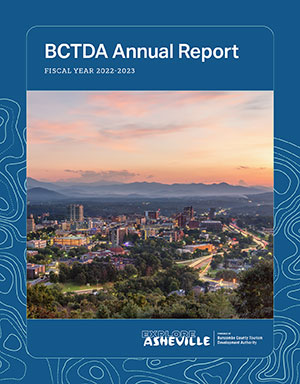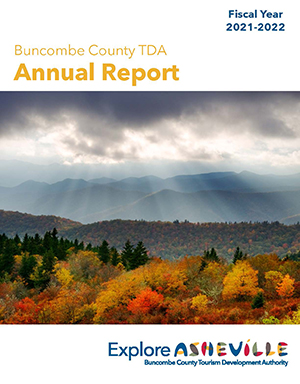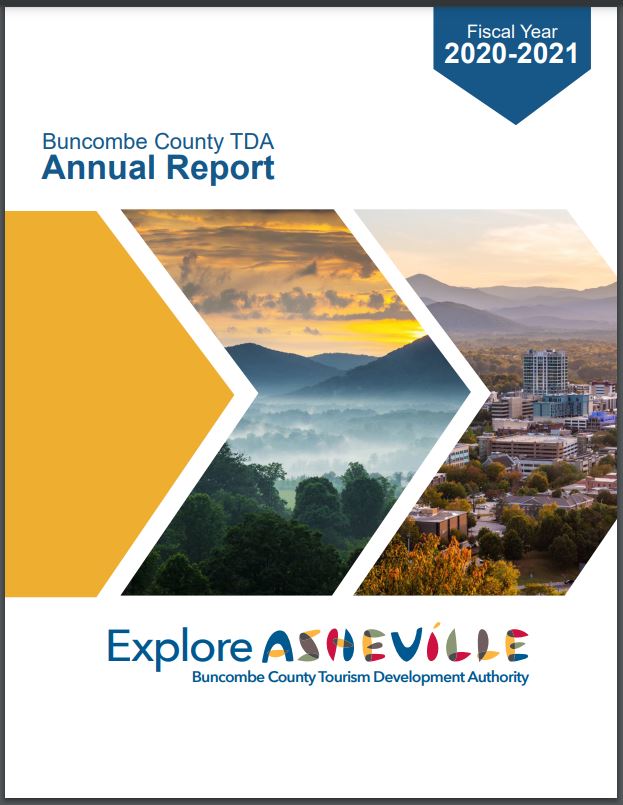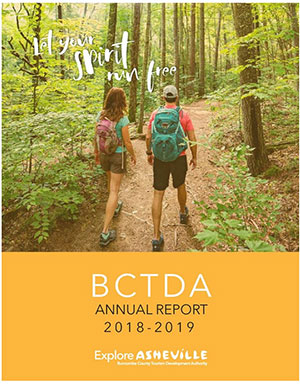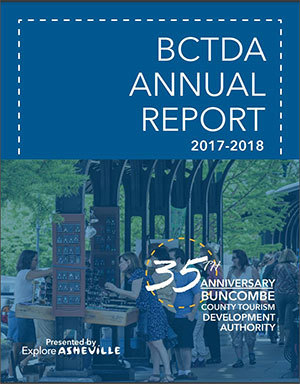Strategic Imperatives
The Buncombe County Tourism Development Authority has adopted strategic imperatives that are informing and guiding the direction of Explore Asheville’s program of work and community investments going forward. Each quarter Explore Asheville generates a report on progress made toward these strategic imperatives.
Strategic Framework Toward Destination Stewardship
Explore Asheville’s Strategic Framework Toward Destination Stewardship aims to balance and harmonize the diverse needs of Asheville and Buncombe County through the lens of economic, cultural, and environmental sustainability. It builds on the authority’s strategic imperatives, cultivated from more than 100 hours of community listening and planning efforts, to balance visitor experiences and resident quality of life. The framework outlines existing strategies and establishes benchmarks for measuring progress toward destination stewardship.
View the Strategic Framework Toward Destination Stewardship >>
Destination Dashboard & Performance Index
At each monthly board meeting, Explore Asheville generates a statistical output report. This snapshot of the local tourism economy includes information from the previous month. Access these reports here >>
Accreditation with Distinction – Destination Marketing Accreditation Program (DMAP)
Explore Asheville earned its reaccreditation eight years after first receiving the Destination Marketing Accreditation Program (DMAP) seal from Destinations International. The DMAP seal is awarded in recognition of the organization’s commitment to industry excellence and meeting the industry standard for performance and accountability of destination organizations around the world. Explore Asheville was awarded “Accreditation with Distinction”, the highest possible recognition for a destination organization. “With Distinction” indicates that the organization exceeded the minimum requirements for accreditation and that the independent DMAP Board found no opportunities for the organization to improve its responses to the required standards.
The accreditation program requires a destination organization to successfully comply with a multitude of mandatory and voluntary standards that span a variety of performance areas to gain this momentous achievement. The standards cover nearly all aspects related to the management and marketing of destination organizations including governance, finance, human resources, sales, communications, destination development and research. Explore Asheville is among over 200 destination organizations who have obtained DMAP recognition, fewer than 10% of which earned “Accreditation with Distinction.”
Economic Impact Information
Visitors significantly contribute to the Asheville economy. In 2023, visitors spent $2.97 billion, according to Longwoods International and Tourism Economics research. Three billion dollars equates to 20% of Buncombe County’s total annual economy.
The benefits of visitor spending are distributed across many business categories. Although the occupancy tax shoulders 100% of the destination marketing investment for our community, lodging partners in 2023 garnered just under a third of the visitor spending at 30%. Restaurants and breweries, local shops, recreation, entertainment, and tour providers and transportation companies reaped 70% – the lion’s share of visitor spending rewards.

Buncombe County Tourism Development Authority Annual Reports
Research & Data
- 2023 Economic Impact of Visitors in Asheville
- 2024 Explore Asheville Resident Perspectives on Tourism
- 2023 Explore Asheville Resident Perspectives on Tourism
- 2022 Explore Asheville Resident Perspectives on Tourism
- 2021 Economic Impact of Visitors in Asheville
- 2019 Economic Impact of Visitors in Asheville
- 2019 Explore Asheville Resident Sentiment Survey
- 2019 Asheville Visitor Profile Report
- 2016 Advertising Effectiveness & ROI Executive Summary
- 2016 Asheville Visitor Profile
- 2016 Portrait of an American Traveler
- 2014 Asheville Visitor Profile Report
- 2012-2014 Buncombe County Visitor Profile
Glossary
– ADR (Average Daily Rate): Room revenue divided by rooms sold, displayed as the average rental rate for a single room.
– Contract Rooms: Contract rooms are occupied at rates stipulated by contracts – such as for airline crews and permanent guests. Room allotments that do not require guaranteed use or payment should not be classified as contract.
– Demand (rooms sold): The number of rooms sold or rented (excludes complimentary rooms).
– Group Rooms: Group rooms are sold simultaneously in blocks of a minimum of 10 rooms or more (e.g., group tours, domestic and international groups, association, convention and corporate groups).
– Occupancy: Rooms sold divided by rooms available multiplied by 100. Occupancy is always expressed as a percentage of rooms occupied.
– Percent Change: Amount of growth – up, flat, or down – this period versus same period last year (month or year-to-date). Calculated as ((TY – LY) / LY) * 100.
– Revenue (Room Revenue): Total room revenue generated from the sale or rental of rooms.
– RevPAR (Revenue Per Available Room): Room revenue divided by rooms available.
– Supply (Rooms Available): The number of rooms times the number of days in the period.
– Transient Rooms: Transient rooms Include rooms occupied by those with reservations at rack, corporate, corporate negotiated, package, government, or foreign traveler rates.



